Week 15 Wildcard Week
Assignment
Design and produce something with a digital fabrication process (incorporating computer-aided design and manufacturing) not covered in another assignment, documenting the requirements that your assignment meets, and including everything necessary to reproduce it.
What I did
I tried composites, so that I can utilize FRP for a casing of my final project.
1. Designing a mold
I need 120 x 120 x 50 (mm) box for the casing. My idea was that to create a box with 3D printer, and create a kind of roof with laser cutter. But FRP seems nice and strong against rain and sunshine.
This time I prepared below design with solid works. I made it simple as this was the first trial.
And 3D printed the mold (solid works file)
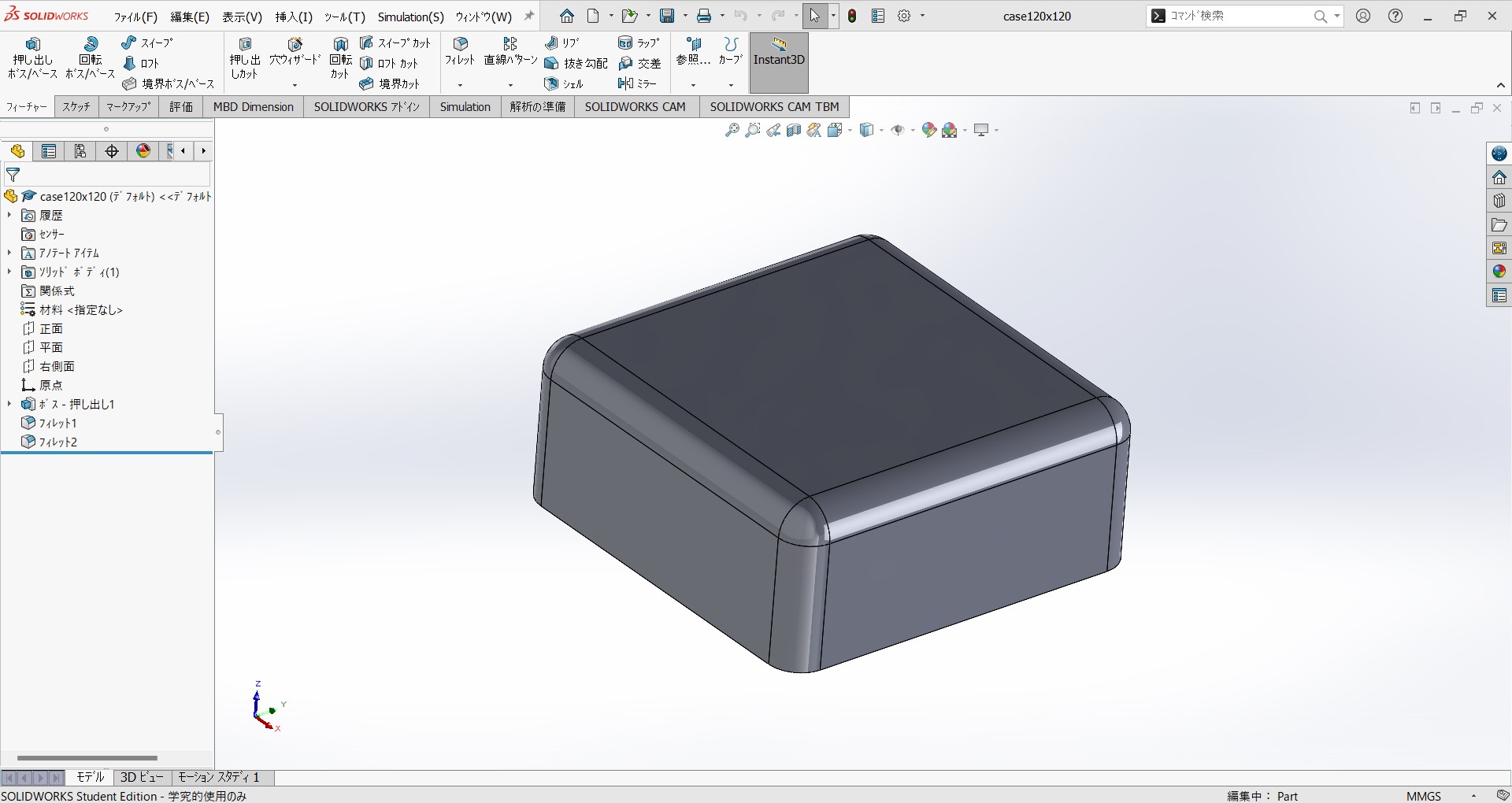
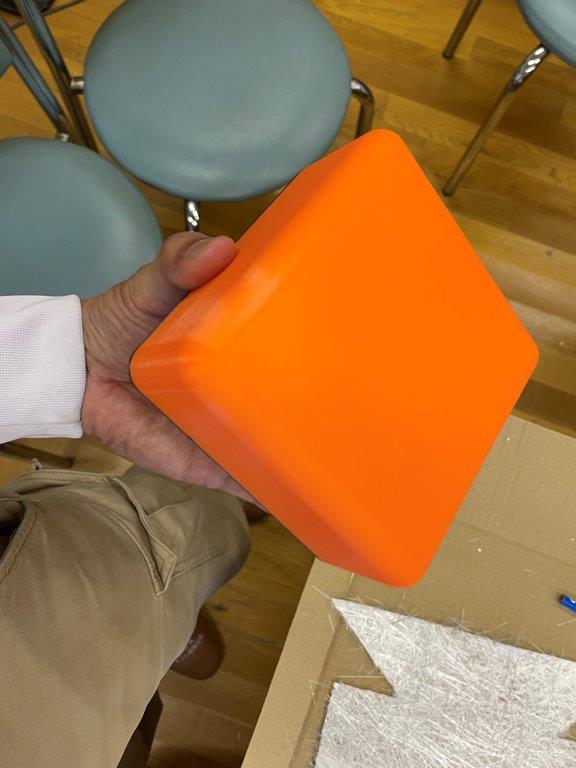
2. Cotton x Plaster with resin
- Our instructor tried this and seemed easy and I thought it was good for first composite trial.
Making process
- Preparation of plaster
- Mix the plaster powder and water (42ml of water for 100g of the powder)
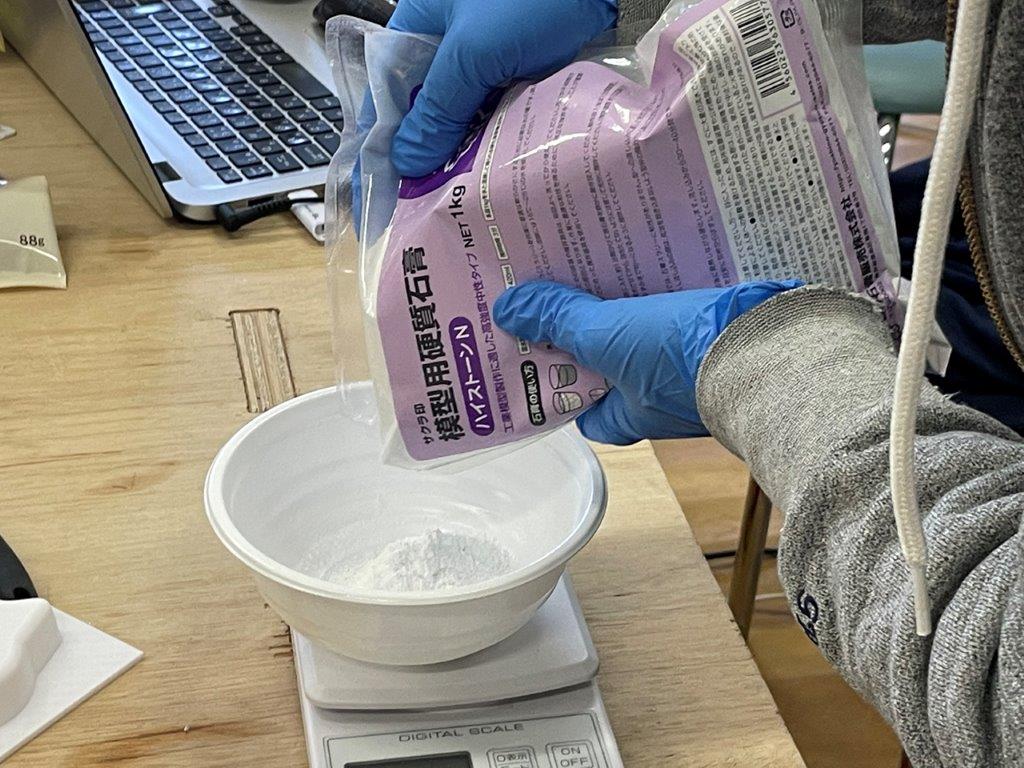
- Keep mixing for 3 minutes

- Mix the plaster powder and water (42ml of water for 100g of the powder)
-
Soaking the fiber in plaster liquid
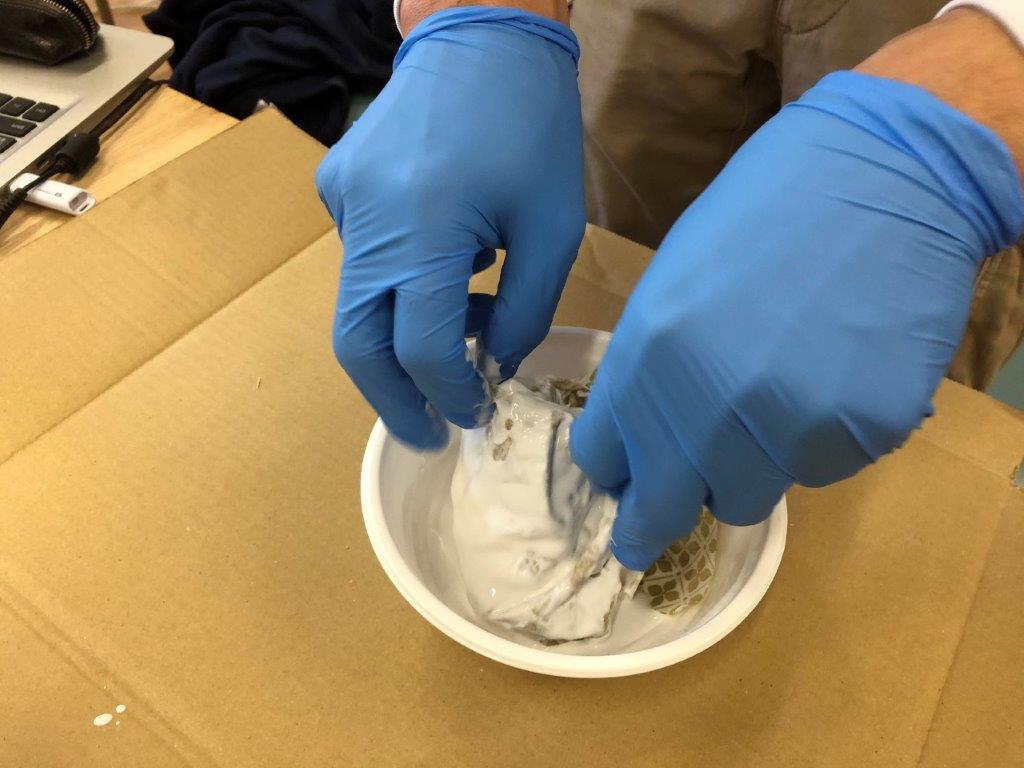
-
Put the fiber on the mold
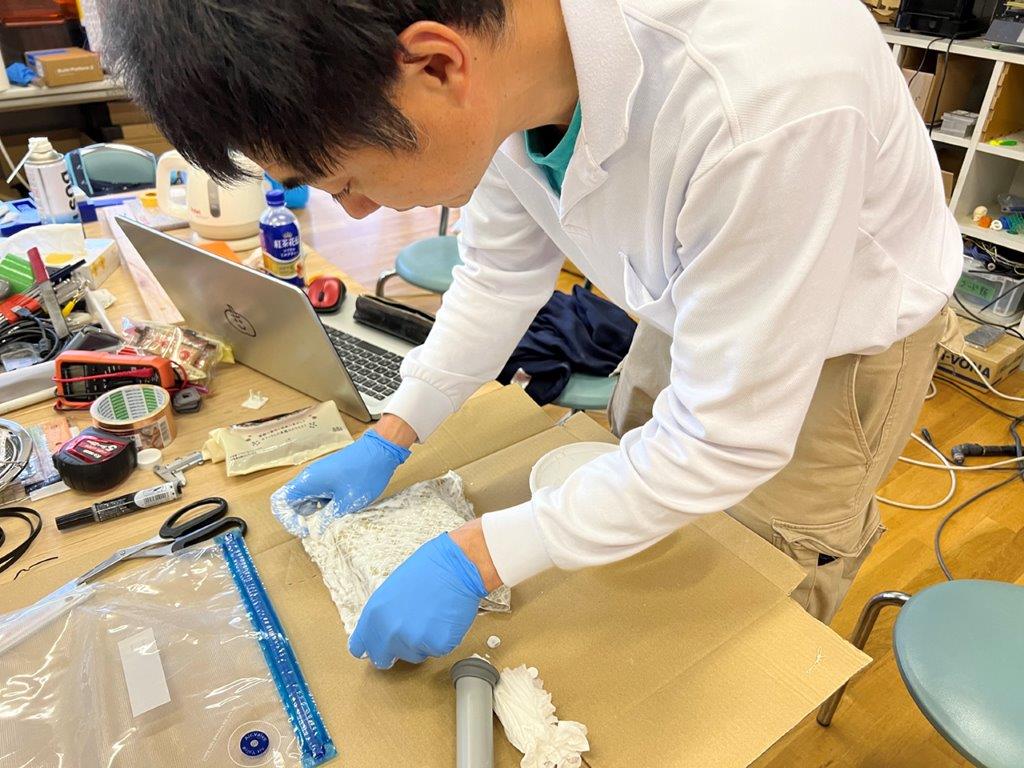

- Put it in a bag and vacuum with a hand vacuumer

- Vacuum done

- Curing complete
The plaster was not spread. Looks not beautiful

Corner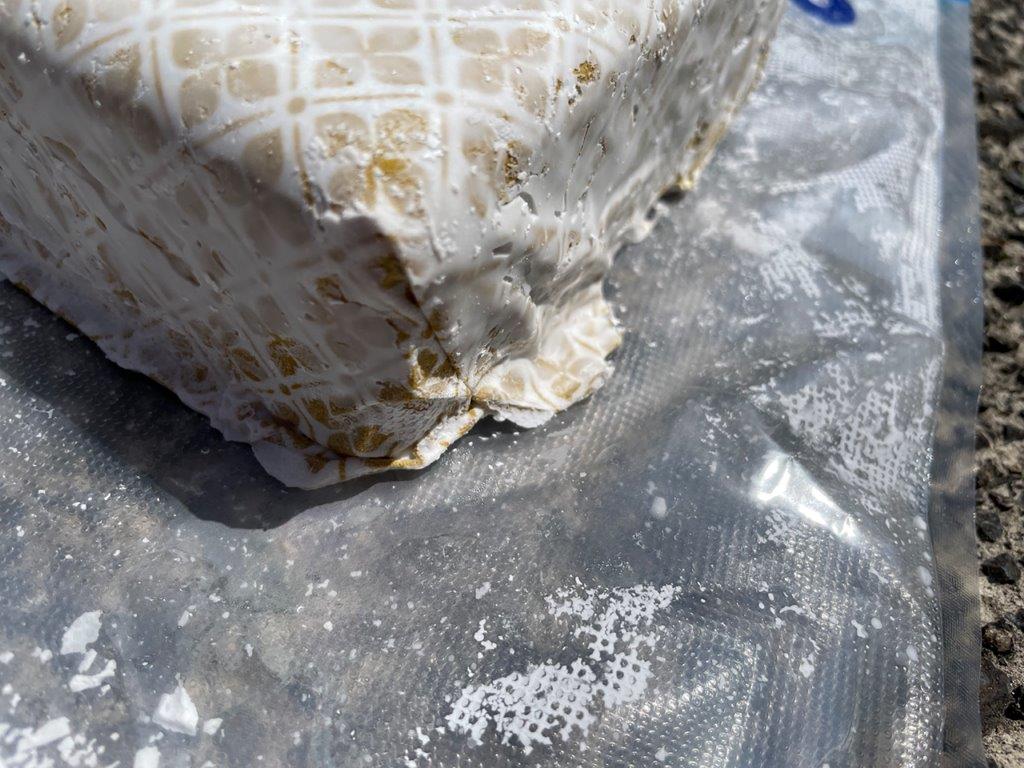
I should not have folded at the bottom, this seems difficult to remove.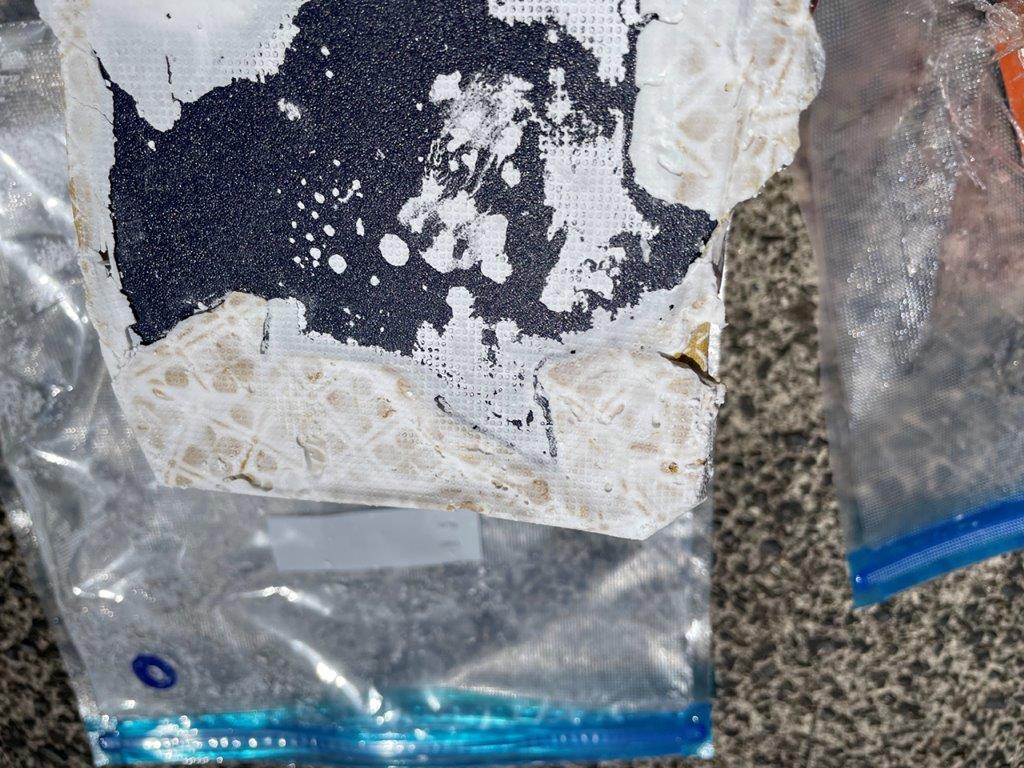
- Removing the mold
- Actually the composite was not hard, so I managed to remove it.


- Not hard.
- Thoughts and feelings
- The result was not good, the reason could be as follows;
- Plaster liquid was too thick to soak through. But if I added water, the result would be softer. For this point, chemical liquid for polyester should be better.
- I did not have clear way to fold the fiber onto the mold, especially bottom side I must fold the fiber outer side.
- To use plaster as matrix, a cotton fabric was not thick enough. If I used thicker fabric it would be better.
- At least it is possible to use as a dish
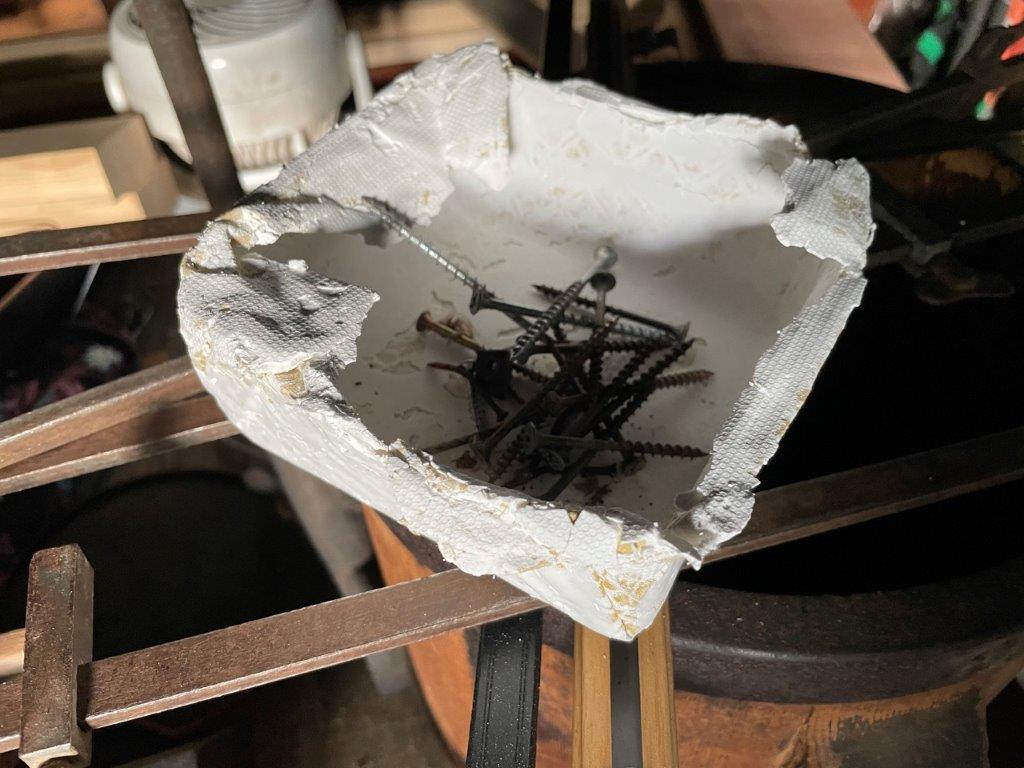
3. Fiberglass x Polyester
- Based on the first trial of composite with plaster, next I tried FRP for the casing.
Making process
- Preparation
- Mix the styrene liquid and curing liquid (100:1)
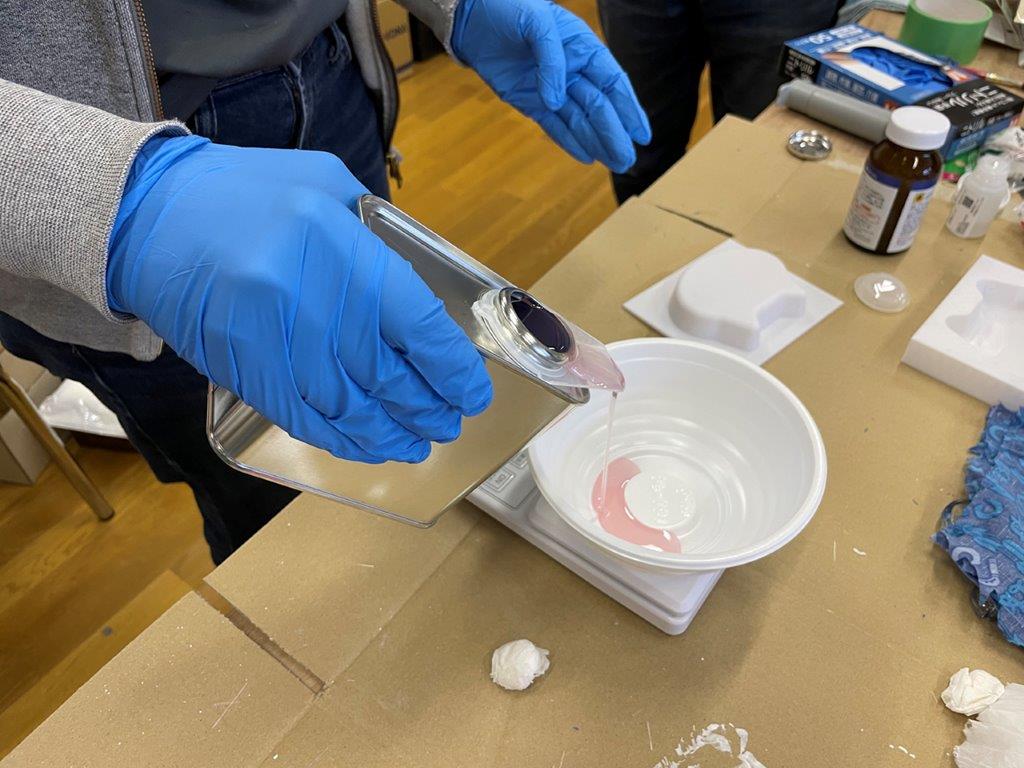
- Well mixed

- Mix the styrene liquid and curing liquid (100:1)
-
Cut the fiber glass
- When I cut fiber glass, I must put on gloves and a mask. The reasoning I refer from below link "Direct contact with fiberglass or breathing airborne dust containing fiberglass may irritate the skin, eyes, nose, and throat." Washington state DOH
- This time I cut it with scissors, but it is not good for 2 reasons. 1st as raised above, cutting with scissors may create tiny fibers. 2nd, very difficult to precise cut due to the structure of fiber glass.
- I should have used cutter especially round blade looks good to cut fiber material.
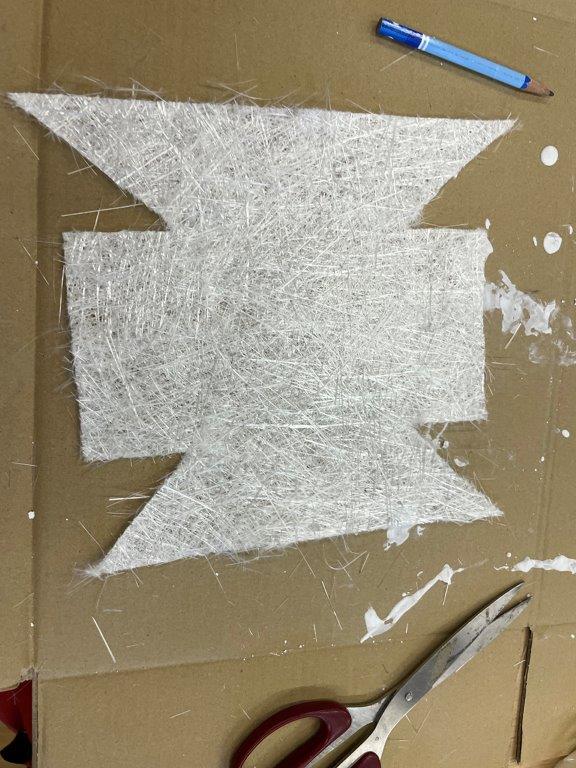
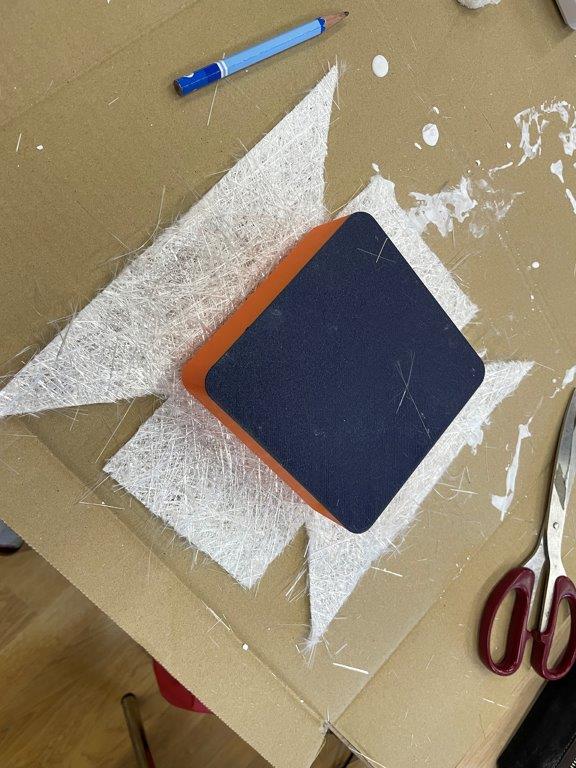
- I should have used cutter especially round blade looks good to cut fiber material.

- If I cut it with machine tool, this site would be of help.
-
Put the fiber on the mold in a bag and vacuum with a hand vacuumer
- Vacuum done
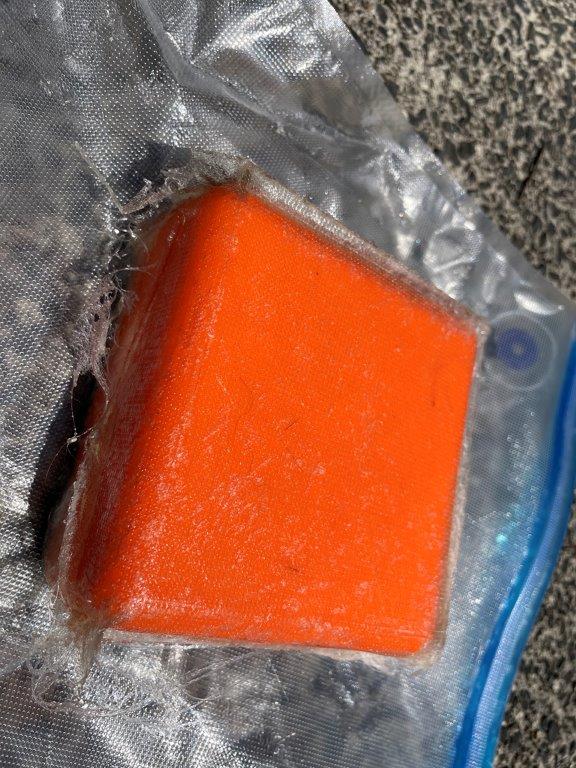
- Glassfiber displaced
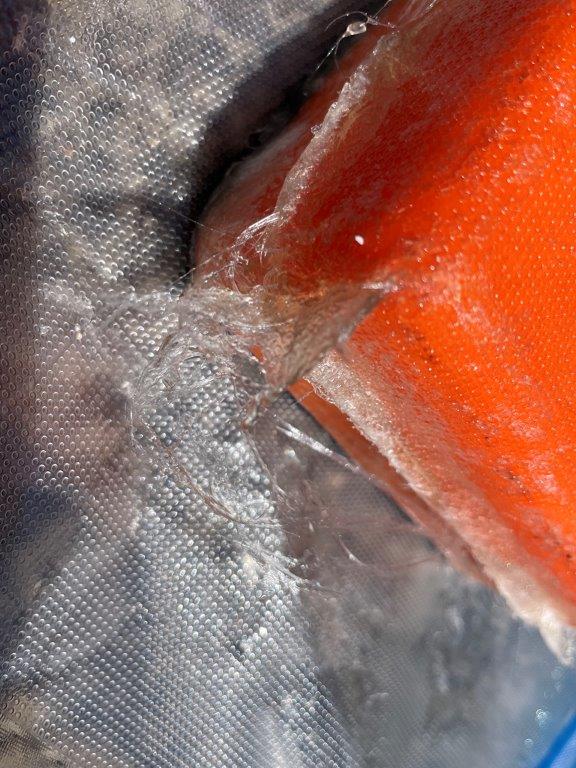
- Curing complete


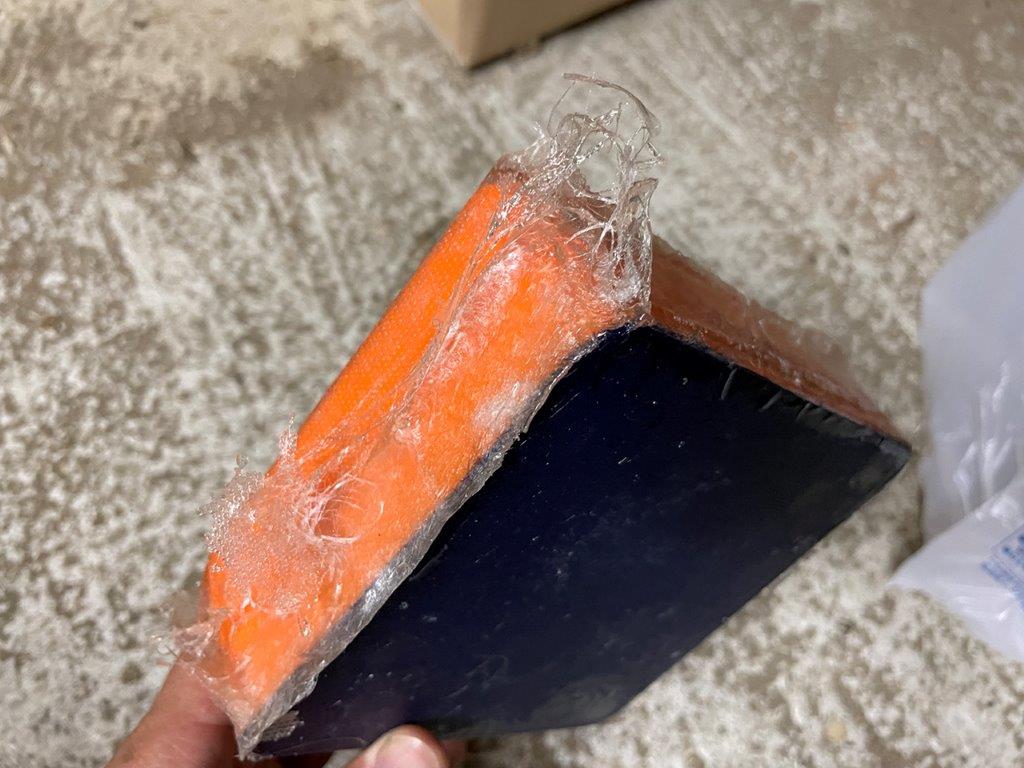
- Vacuum done
-
Removing the mold
- I could not remove it.
5. Thoughts and feelings
- This was a failure. The reasoning seems as follows;
- I could not keep the glassfiber shape when I put it into the vacuum bag. This caused displaced fiber as a result.
- I could not remove from the mold because I did not make the mold's surface smooth. I must have did more sanding.
- At least good thing was the shell was hard, even if it looks thin.
- If I made the mold softer material like silicon, it would be easier to remove.
- All in all it ended a mess, but I learned the important point of composites. The preparation of mold surface and vacuum bag must be better for next time.